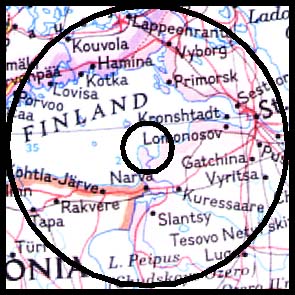




City, Country
Sosnovy Bor/St. Petersburg, Russia
Number & type of Reactors
4 X RBMK
Net Electric Power as % in 92 of national total
3654 MWe
50% energy for NW regions of Russia
Major population Centers in a 150 km radius and
total estimated population of 150 km r. region
Approximately 7 million including St. Petersburg, parts of Finland, and Estonia
Date of commercial operation start up
or (if unfinished) date of construction start.
Commercial startup in 1973, 1975, 1979, 1981
Operator/Builder
LNPP - Operator; Ministry of Middle Machine Building - Builder
These oversized Chernobyl-style reactors are suffering from acceleratred embrittlement of their fuel channels, and thus an increased likelihood of catastrophic failure. During Ignalina’s construction period, corruption, stealing, and drunkenness was common in the workforce, so construction quality is of a low level. The plant has been built on a geologic fault between two moving tectonic plates
.
Electricity demand in Lithuania is considerably less than that produced by Ignalina, and there is little opportunity to export electricity profitably. If the investments needed for acceptable safety and for nuclear waste management are taken into account, there is no economic reason to keep such a big plant in operation. Hungary has just purchased slightly used fuel from the Greifswald reactor for use at Paks.


